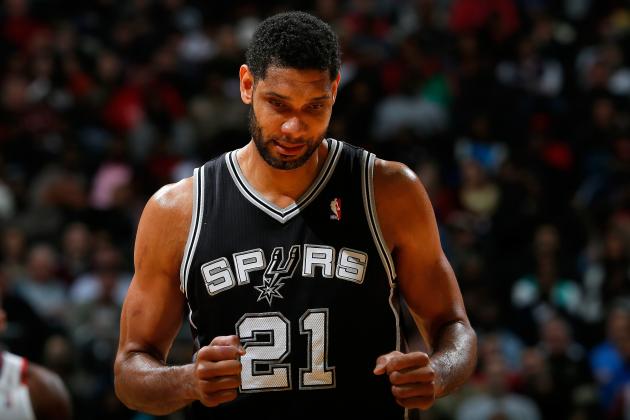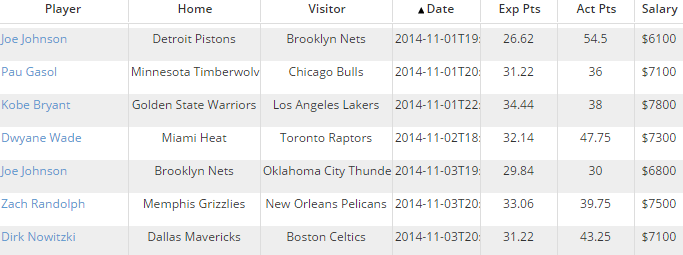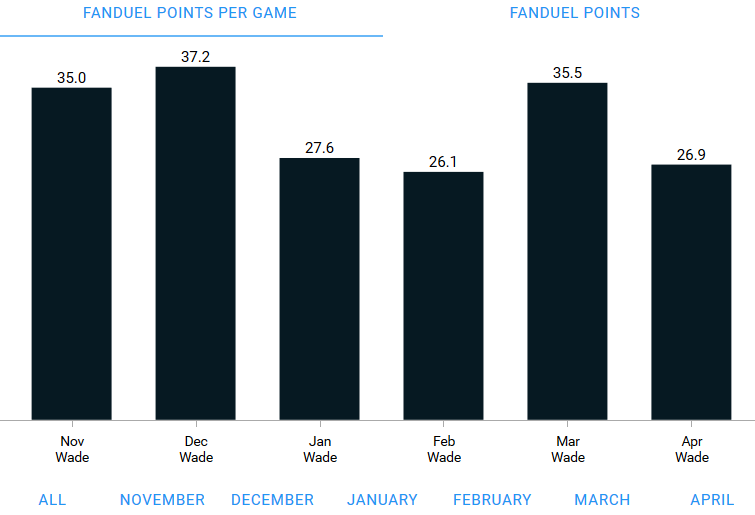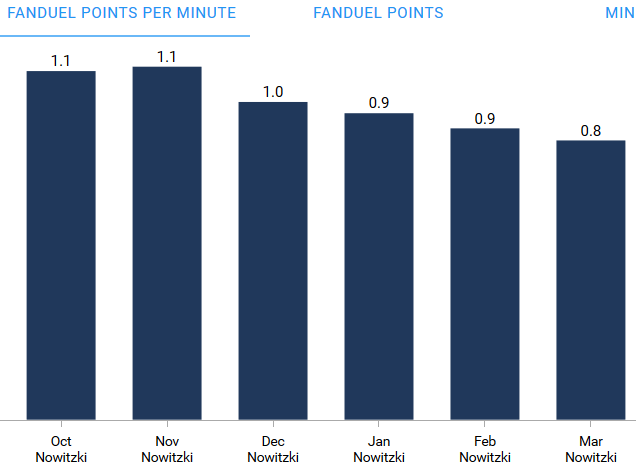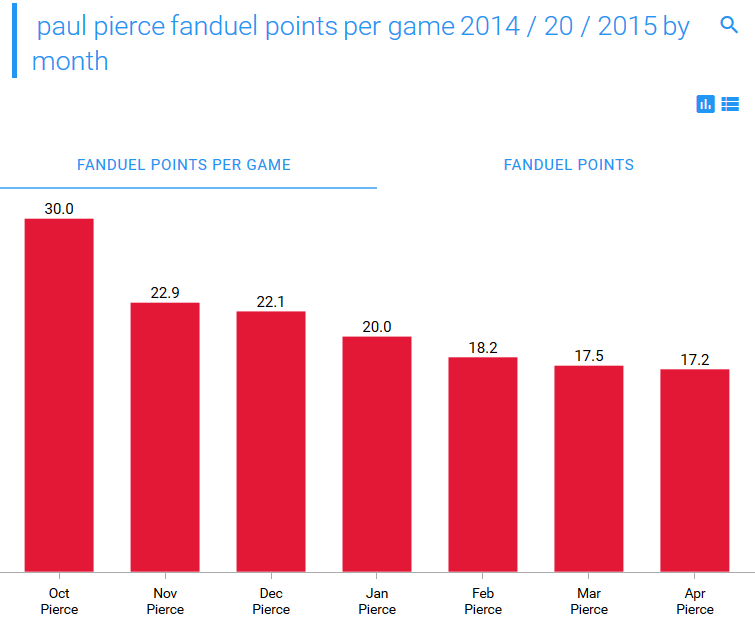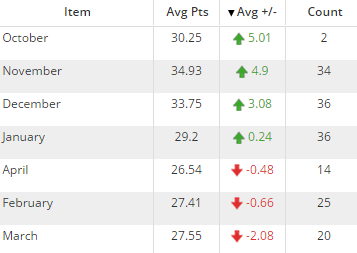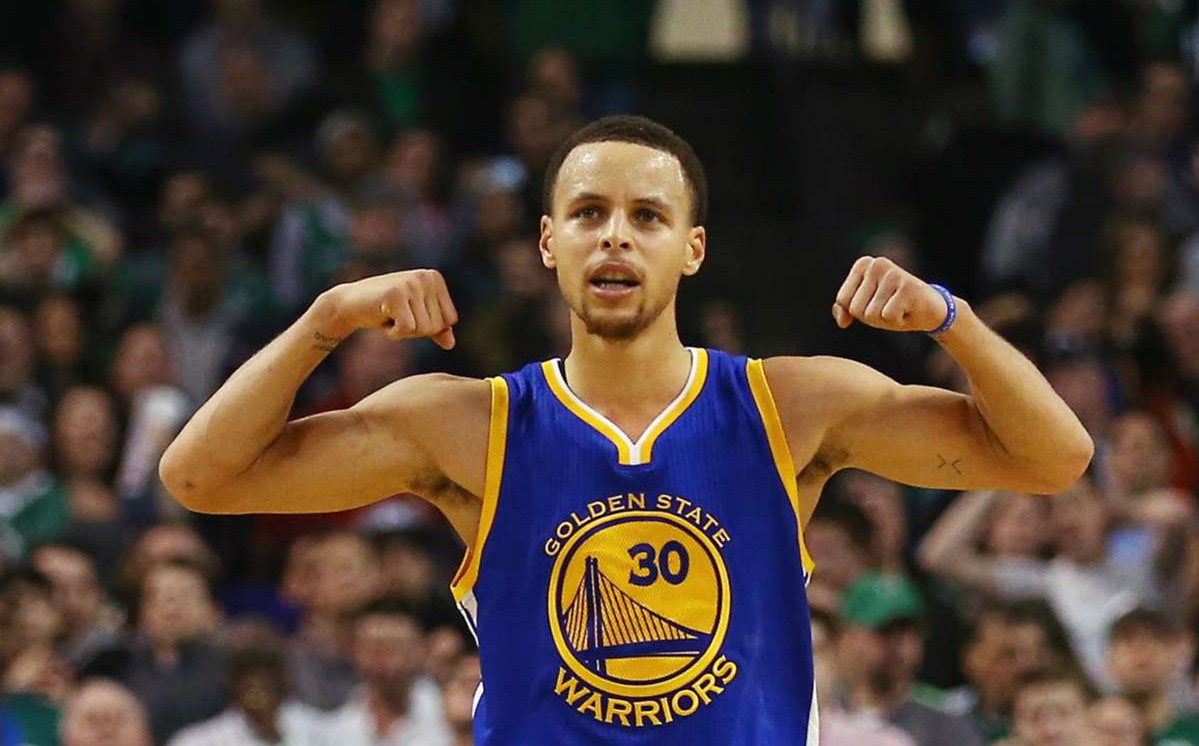Fantasy players love shiny, new things. We love rostering a rookie during their first breakout performance and we love showing how smart we are by rostering the second year player who is ticketed for a larger role in the offense. I think seasoned veterans are often the group we neglect while chasing down shiny things, and that’s not always the right play in NBA DFS.
It’s not as much fun to roster a player whose most productive NBA seasons are behind him. But these veteran players are plenty useful too – particularly in the beginning of the season. In October and November, shield your eyes from the bright lights and try rostering the following proven players. I used Fantasy Labs’ trend tool to group together several mid-thirties players who played a big role on their team last year and who I am anticipating will be a key component again this season. Here are the players:
Within the result set, here’s the production splits by month:
| Months | Plus/Minus |
| October/November | +2.87 |
| December/January | +0.37 |
| February/March | +1.22 |
Look at some of these first week of the season lines in 2014-2015:
Early in the season, many of these players both play more minutes and are more productive with those minutes. I’ll look at a couple through the use of Statmuse queries.
Tim Duncan averaged just about five more minutes per game from October-December than he did during January-April (31.5 to 26.76). Duncan hovered right around 1.1 FanDuel points per minute played throughout the 2014-2015 season, so playing Duncan earlier in the year usually meant you could expect about 5.5 more fantasy points from him per game.
Dwyane Wade fits into the same category. He lost about 2.5 minutes per game when comparing the first and second halves of the season. Looking at the results, it looks like the drop was mainly due to a sharp decline in FG% (almost a 10 point decrease after December), which led to 3.2 points per game being knocked off of his scoring average.
Dirk’s minutes stayed level throughout the season, but his problem was on court production. He hit rock bottom in February-March when he was only scoring 14.9 points per game.
Here’s another good one:
The Statmuse results are pretty telling, but back to Fantasy Labs for more. This one really surprised me – here are the results during back-to-back games. During the beginning of the season, the mid-thirties crowd actually does very well when playing back-to-back days. From there, it is a steep descent until we finally hit rock bottom in the month of March.
The point is, while the majority of DFS players are experiencing Shiny Object Syndrome at the beginning of the year, the mid-thirties veterans are playing their best basketball. It’s fun to “be right” on a young player in their breakout game, but rostering the steady veteran may be a clearer path to the money in October/November.
